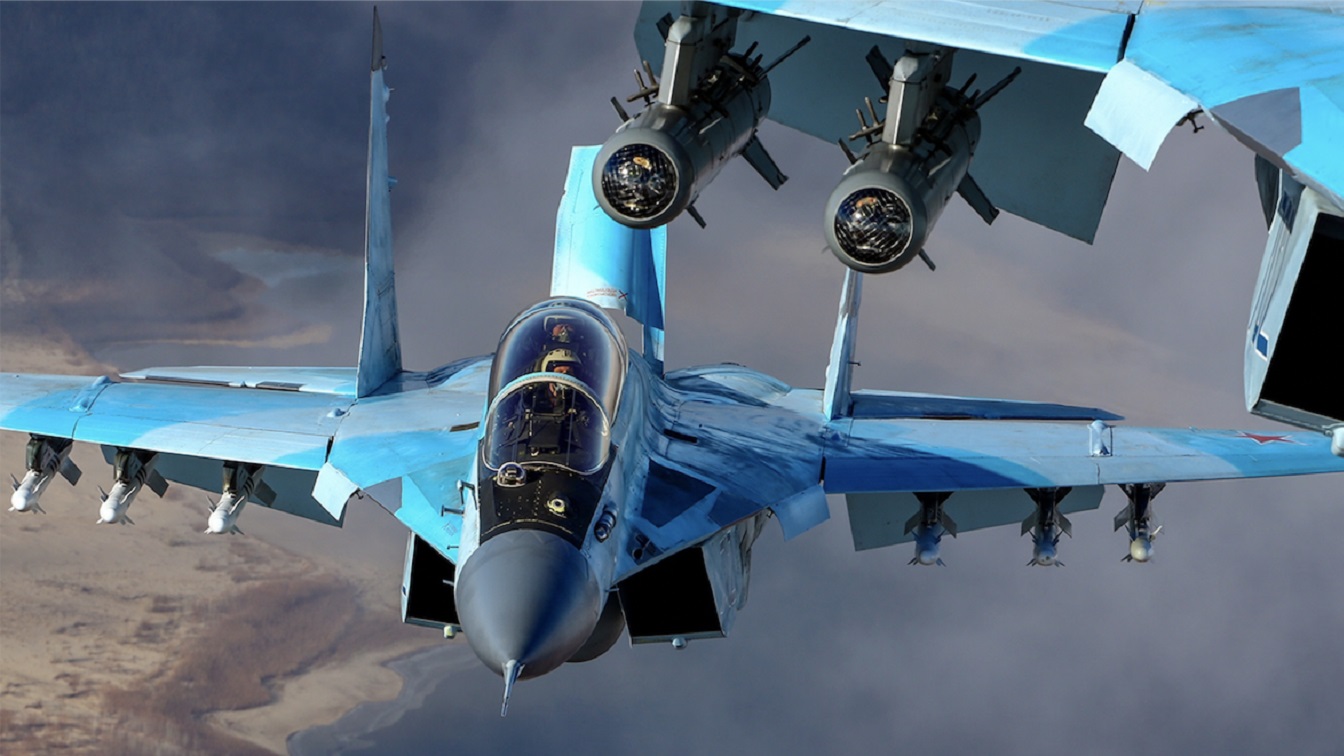The MiG-35 Looks Like a Joke: A lot of military hardware has similar monikers – so much so that even lawmakers get confused, which could explain why President Joe Biden has talked about the AR14 while climate czar John Kerry has touted banning the AR16.
Then there is the Mikoyan MiG-35 (NATO reporting name “Fulcrum-F”), an upgraded variant of the MiG-29K/KUB and MiG-29M/M2 that the Kremlin has touted for its advanced capabilities. The all-weather combat attack aircraft was developed by the Mikoyan design bureau, a subsidiary of the state-owned United Aircraft Corporation (UAC), as a multirole aircraft that could be employed to destroy enemy targets day or night, including moving and stationary ground and surface targets.
Not So Clever Marketing Ploy
The choice of name is notable, so much so that some experts have contended that the new “MiG-35” designation is simply a marketing ploy – one that suggests the MiG-35 is Russia’s answer to the Lockheed Martin F-35 Lightning II. Yet, that hardly seems the case, and most aviation experts will quickly point out that the medium-weight aircraft is still at heart little more than a fourth-generation “++” multirole fighter.
Russia has hyped the MiG-35’s capabilities, notably that it features vastly improved avionics and advanced weapons systems, including the new Phazatron Zhuk active phased array radar, which can detect multiple targets. The array can reportedly track upwards of 30 targets and engage six of them simultaneously – with the forward system able to detect incoming threats from at least 50 km (30 miles). The radar system is also resistant to electronic countermeasures and has a longer detection range than previous Russian-made radar platforms.
The aircraft is also reported to be fitted with two Klimov RD-33MK after-burning turbofan engines, which can enable the aircraft to reach a maximum speed of Mach 2.25, and it has a combat range of about 620 miles. With nine hardpoints, the MiG-35 can carry a selection of missiles, rockets, and bombs including Kh-31A anti-ship missiles with active radar seekers, the Kh-31P anti-radar missiles, Kh-29TE missiles, and KAB-500Kr TV-guided bombs. The aircraft is also armed with a 30mm cannon but carries just 150 rounds of ammunition.
An Export Aircraft – Not Likely
Russia remains the sole operator of the MiG-35, and yet, even as production has been slow, a variant has been considered for export. India had been named as a potential buyer, and the MiG-35 was seen as a potential contender to the Eurofighter Typhoon, F/A-18E/F Super Hornet, Dassault Rafale, JAS 39 Gripen, and F-16 Falcon for the Indian Air Force’s MRCA competition to select a new multirole combat aircraft.
Yet, given the issues with production, New Delhi has moved on to aircraft that will actually take to the skies.
Will It Even Fly in Russia?
The Kremlin has continued to struggle to reach serial production with the MiG-35, and despite a 2013 order for 37 aircraft, few have been produced. To date just six have reportedly been serially produced, in addition to two test prototypes.
Whether the Kremlin even receives its full order of those aircraft simply remains unclear at this point. As with other highly-touted hardware – notably the Sukhoi Su-57 and the T-14 Armata tank – Moscow is quick to hype a platform’s capabilities, tell the world what a threat the system would be, and then fail to follow through with large-scale deliveries. The most advanced aircraft – which the MiG-35 most certainly is not – is still only good if you can produce it in numbers.
The Fulcrum-F is essentially little more than an upgraded Cold War aircraft, and likely far less capable than the Boeing F-15EX. As with other efforts, Moscow should cut its losses. This is just one of several combat platforms the Kremlin has widely touted, and shown its inability to actually produce.
Expert Biography: A Senior Editor for 1945, Peter Suciu is a Michigan-based writer who has contributed to more than four dozen magazines, newspapers, and websites with over 3,000 published pieces over a twenty-year career in journalism. He regularly writes about military hardware, firearms history, cybersecurity, and international affairs. Peter is also a Contributing Writer for Forbes. You can follow him on Twitter: @PeterSuciu.

